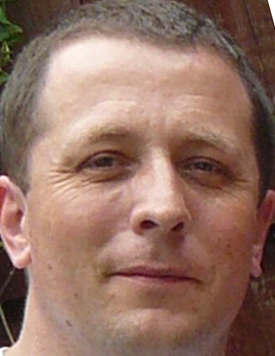Karnaugh Maps (OCR A Level Computer Science)
Revision Note

Author
Neil SouthinExpertise
Computer Science
Karnaugh Maps
What is a Karnaugh Map?
This is a tool that is used for simplifying Boolean algebra expressions
It offers a visual method of grouping together expressions with common factors
The format of the map makes it easy to identify and eliminate redundant terms
They are used in digital logic design, such as simplifying the logic of digital circuits
Steps:
Create the Map: Each cell in the grid corresponds to a term in the Boolean expression. Fill cells with 1s and 0s corresponding to the output of that term
Grouping: Group the 1s in the grid. Each group must be a rectangle and the size of the group must be a power of 2. A cell can be part of multiple groups
Simplifying: Write down a simplified Boolean expression for each group. The simplified expression for a group consists of the variables that remain constant in all terms in the group
Final Expression: Combine the simplified expressions from each group using OR operations to get the final simplified Boolean expression
Creating Karnaugh Maps
A Karnaugh Map (KMap) can be used to simplify a Boolean expression with 2 inputs
Here is an example for the expression A V B (A OR B)
Step 1
Add each variable starting with A at the top and B down the side
Add each possible state for A and B

Step 2
Take each expression in turn separated by the V (OR)
First look at A on it's own
Find all cells where A is 1
Add 1 to the cell

Step 3
Repeat for B

Step 4
This is now a completed KMap for the expression A V B (A OR B)

Simplifying Expressions Using Karnaugh Maps
Simplify ¬A^¬B^C v ¬A^B^¬C v A^¬B^C v A^B using a KMap.
In this example there will be 3 variables A,B and C so the empty KMap will look like this:

Step 1:
Split this long term at each OR giving 4 smaller expressions (subterms) to add to the table:
¬A^¬B^C
¬A^B^¬C
A^¬B^C
A^B
Step 2:
Take the first subterm ¬A^¬B^C
Put a 1 in the map for every cell where this term would be TRUE (1)
So if A and B were 0 and C was 1 this subterm would be 1
So put a 1 in every cell in the KMap where A is 0, B is 0 and C is 1

Step 3:
The next subterm is ¬A^B^¬C
Put a 1 in the KMap where A is 0, B is 1 and C is 0

Step 4:
The next subterm is A^¬B^C
Put a 1 in the KMap where A is 1, B is 0 and C is 1

Step 5:
The final subterm is A^B
Put a 1 in the KMap where A is 1 and B is 1 (2 cells this time)

Making the groups
Once you have written the 1s and 0s into your KMap, you can then use this to simply the expression
In order to do this, you need to identify the groups
This is the key to using the Karnaugh map to derive the simplified expression
The aim of making the groups is to
Make rectangular groups
Make groups that are as large as possible
Make groups that contain either 8,4,2 or 1 ones
Groups can overlap (i.e. some ones can be in multiple groups)
The Karnaugh map ‘grid’ wraps round in all directions so the groups can wrap round
Example grouping
Group 1:
So this would be one group.

This group would represent A since within this group both C and B change (have zeros and ones) whereas for A all the cells are one.
Group 2:
This would be another group (note the wrapping around).

This group would represent ¬B since within this group both A and C change (have zeros and ones) whereas for B all the cells are zero
Final simplified expression
To get the final simplified expression we OR the terms representing the two groups together.
So the simplified expression is A v ¬B
Exam Tip
In questions where you have to use a Karnaugh Map always show the groups by drawing a box/circle round them.
Worked Example
A Boolean expression is entered into a Karnaugh map.

Give a simplified version of the expression using the Karnaugh map.
You must show your working
3 marks
How to answer this question:

Looking at the group of 8 in the middle of the map, for all the cells in the group the variable B is always a 1
The 3 other variables change across the group (i.e. for some cells they are 0 and for others they are 1
So this group is BLooking at the other group of 8, for all the cells in this group, C is always 0 but the other 3 variables can be 1 or 0 in this group So this group simplifies to ¬C
Answer:
Answer that gets full marks:
B v ¬C

You've read 0 of your 0 free revision notes
Get unlimited access
to absolutely everything:
- Downloadable PDFs
- Unlimited Revision Notes
- Topic Questions
- Past Papers
- Model Answers
- Videos (Maths and Science)
Did this page help you?